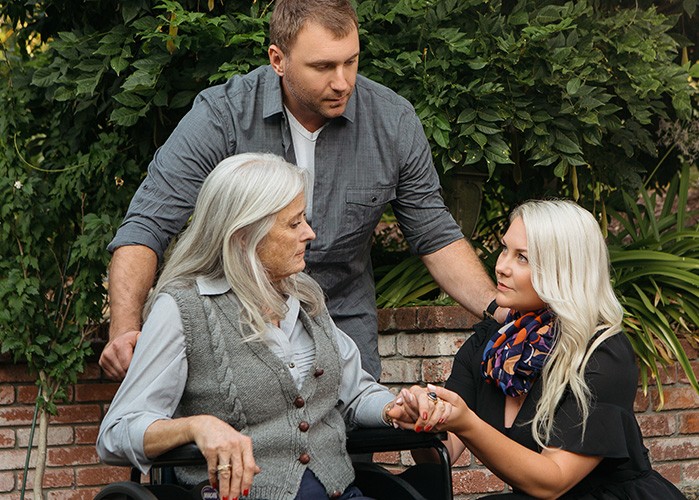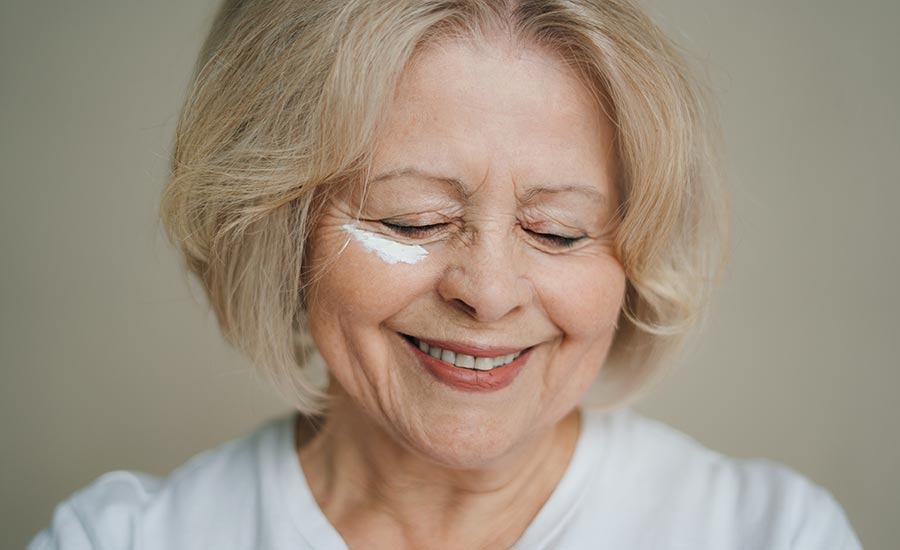Stand Up Straight! Exercise to Create Good Posture

We can avoid debilitating problems from poor posture by working now on core strength, balance and flexibility. The right exercises and physical training are good places to start.
Anyone who has been in a nursing home or assisted-living facility will have noticed older adults so stooped over that their heads are looking down rather than straight ahead. Although common, such conditions are not inevitable with aging. By working on our core muscles when we are younger, we can help prevent bad posture and everything that goes along with it: weak muscles, poor balance, limited flexibility and increased susceptibility to falls. On the other hand, good posture means your whole body is properly aligned and working.
“When your head is pulled forward, your torso is rolling forward and your chest caves in,” says Steven P. Weiniger, author of Stand Taller, Live Longer: An Anti-Aging Strategy. “You can’t take a deep breath. Studies have shown that people with weak posture are more likely to have incidents of cardiovascular and pulmonary issues” (quoted in the Huffington Post).
Benefits of Good Posture
Proper posture is more than standing up straight. It keeps you healthy and strong in various ways by:
- Keeping bones and joints in correct alignment, thus decreasing the wearing of joint surfaces that could result in degenerative arthritis and joint pain.
- Reducing muscle strain and fatigue in your neck, shoulders and lower back because bones and joints are better aligned and muscles therefore work more efficiently.
- Reducing the stress on the ligaments holding the spinal joints together, minimizing the likelihood of injury.
- Increasing your core strength by engaging core abdominal and back muscles, which contributes to good balance and physical agility.
- Decreasing risk of bone deformity because bones are constantly forming new cells and over time respond to chronic pressure to change shape.
- Improving your energy and mood. Several studies, notably by Dutch behavioral scientist Erik Peper, have linked sitting or standing up straight to being better able to remember positive memories and having more confidence.
What Is Good Posture?
Proper posture is more than just pulling back your shoulders. The spine has two natural curves, called the “double C” or “S” curves, which go from the base of your head to your shoulders and from the upper back to the base of the spine. When standing straight up, your weight should be evenly distributed on your feet.
The American Chiropractic Association offers tips for sitting and standing properly.
Sitting
- Keep your feet on the floor or on a footrest if they don’t reach the floor.
- Avoid crossing your legs. Your ankles should be in front of your knees.
- Keep a small gap between the back of your knees and the front of your seat.
- Your knees should be at or below the level of your hips.
- Adjust the backrest of your chair to support your low- and mid-back or use a back support.
- Relax your shoulders and keep your forearms parallel to the ground.
- Avoid sitting in the same position for long periods of time.
Standing
- Bear your weight primarily on the balls of your feet.
- Keep your knees slightly bent.
- Keep your feet about shoulder-width apart.
- Let your arms hang naturally down the sides of the body.
- Stand straight and tall with your shoulders pulled backward.
- Tuck in your stomach.
- Keep your head level; your earlobes should be in line with your shoulders. Do not push your head forward, backward or to the side.
- Shift your weight from your toes to your heels, or from one foot to the other, if you have to stand for a long time.
Exercises to Help
Exercises that improve posture include cardio, strength and flexibility training. Classes such as Pilates or yoga help to strengthen and improve flexibility in the core muscles that support posture. Changes won’t happen quickly, because poor posture likely took a long time to create and will take some time to improve. Therefore, awareness of your posture should be an ongoing, daily practice.
The National Osteoporosis Foundation offers two posture exercises to get you started:
Head presses.
These help align your head over your shoulders and reduce tightness in your spine, neck and upper back.
- Sit in a chair with your middle and lower back well-supported.
- Move your head straight back as far as possible.
- Keep your chin level with the floor and look straight ahead. Do not tilt your chin or forehead.
- Hold your head back in this position for 3 or 4 seconds.
- Relax back into your normal posture for a second or two.
- Repeat five times.
- Repeat several times a day.
Standing back bends.
These stretch your spine and muscles for greater flexibility and movement.
- Stand with your feet shoulder-width apart and your buttocks against a counter or heavy table that won’t move.
- Place your hands at your waist. Pinch your shoulder blades back as if you are trying to squeeze a pencil between them. Then lean back slightly but stay comfortable.
- Keep your head in its normal position. The underneath part of the chin should be level with the ground. Look straight ahead.
- Hold for a slow count of five.
- Relax back into your normal posture.
- Repeat five times.
- Repeat several times a day.
Sources
“Senior Fitness: Importance of good posture ,” Jan. 22, 2013, National Institute for Fitness and Sports
“3 Ways To Improve Your Posture—And Why You Should,” Sept. 28, 2013, Huffington Post
“Posture is Essential to Balance and Function,” National Center on Health, Physical Activity and Disability
“Stand straighter, live longer: Good posture can help you age better, “ June 7, 2013, Sun Sentinel
“3 Benefits of Improving Your Posture,” Health Status
“The Science Behind Posture and How It Affects Your Brain,” Life Hacker
“How posture influences mood, energy, thoughts,” Sept. 3, 2013. SF Gate
Stand Up Straight! Exercise to Create Good Posture is a featured article in the February 2016 Senior Spirit newsletter
Blog posting provided by Society of Certified Senior Advisors
www.csa.us
Reprinted by Always Best Care Senior Services with permission from the Society of Certified Senior Advisors.
The Certified Senior Advisor (CSA) program provides the advanced knowledge and practical tools to serve seniors at the highest level possible while providing recipients a powerful credential that increases their competitive advantage over other professionals. The CSA works closely with Always Best Care Senior Services to help ABC business owners understand how to build effective relationships with seniors based on a broad-based knowledge of the health, social and financial issues that are important to seniors, and the dynamics of how these factors work together in seniors’ lives. To be a Certified Senior Advisor (CSA) means one willingly accepts and vigilantly upholds the standards in the CSA Code of Professional Responsibility. These standards define the behavior that we owe to seniors, to ourselves, and to our fellow CSAs. The reputation built over the years by the hard work and high standards of CSAs flows to everyone who adds the designation to their name. For more information, visit www.society-csa.com
Always Best Care Senior Services
Always Best Care Senior Services (Always Best Care) is based on the belief that having the right people for the right level of care means peace of mind for the client and family. Always Best Care Senior Services has assisted over 25,000 seniors, representing a wide range of illnesses and personal needs. This has established the company as one of the premier providers of in-home care, assisted living placement assistance, and skilled home health care.
To print this article CLICK HERE



![How To Manage Incontinence in the Elderly [+ FAQs]](https://alwaysbestcare.com/wp-content/uploads/2024/05/incontinence-in-elderly-hero-image.jpg)

